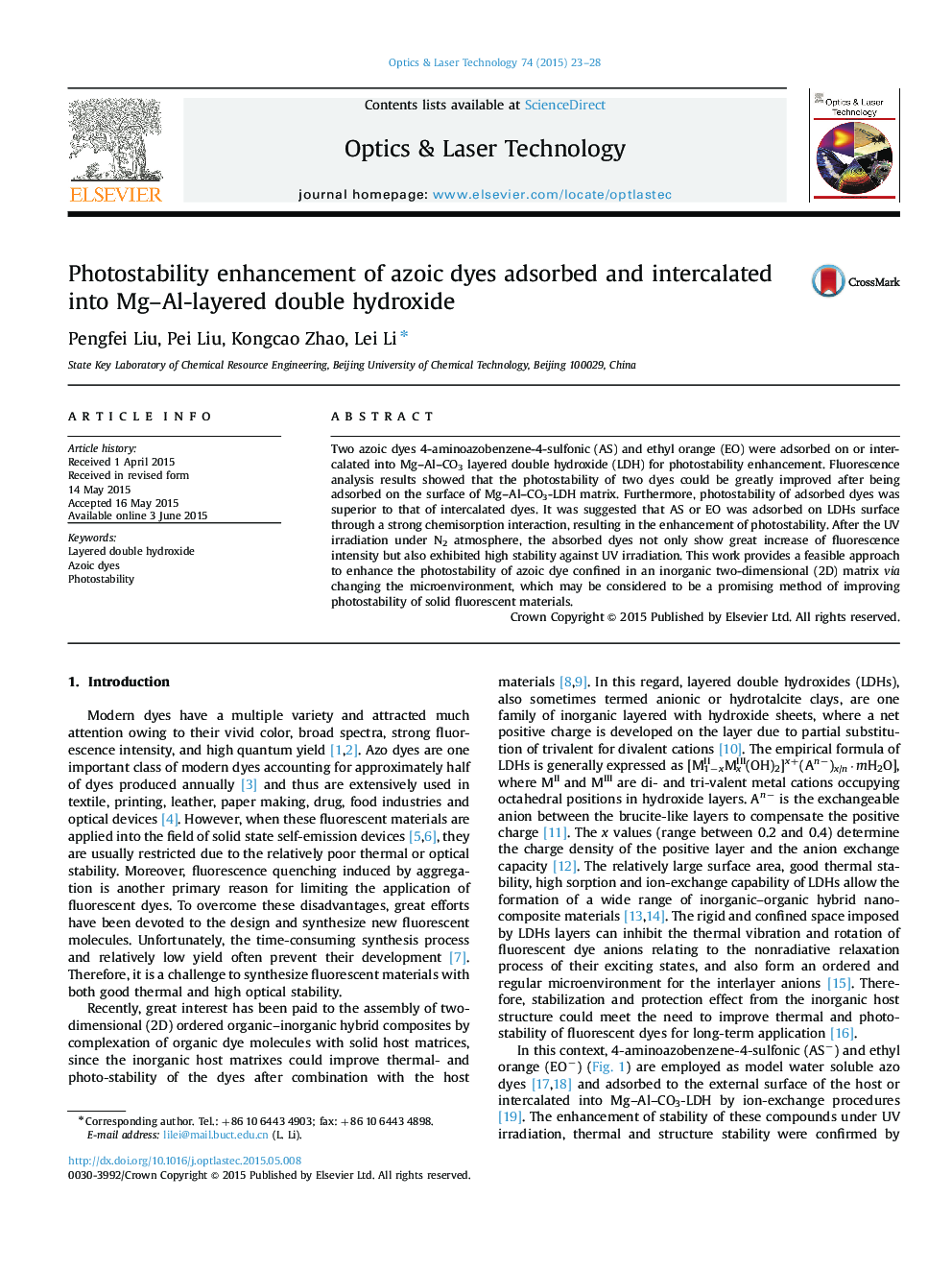| Article ID | Journal | Published Year | Pages | File Type |
|---|---|---|---|---|
| 739083 | Optics & Laser Technology | 2015 | 6 Pages |
•Photostability of the two dyes can be greatly improved by Mg–Al–CO3-LDH matrix.•Adsorbed compound has much higher photostability by a chemisorption interaction.•FL intensity and stability of adsorbed compounds were greatly increased under N2.
Two azoic dyes 4-aminoazobenzene-4-sulfonic (AS) and ethyl orange (EO) were adsorbed on or intercalated into Mg–Al–CO3 layered double hydroxide (LDH) for photostability enhancement. Fluorescence analysis results showed that the photostability of two dyes could be greatly improved after being adsorbed on the surface of Mg–Al–CO3-LDH matrix. Furthermore, photostability of adsorbed dyes was superior to that of intercalated dyes. It was suggested that AS or EO was adsorbed on LDHs surface through a strong chemisorption interaction, resulting in the enhancement of photostability. After the UV irradiation under N2 atmosphere, the absorbed dyes not only show great increase of fluorescence intensity but also exhibited high stability against UV irradiation. This work provides a feasible approach to enhance the photostability of azoic dye confined in an inorganic two-dimensional (2D) matrix via changing the microenvironment, which may be considered to be a promising method of improving photostability of solid fluorescent materials.
